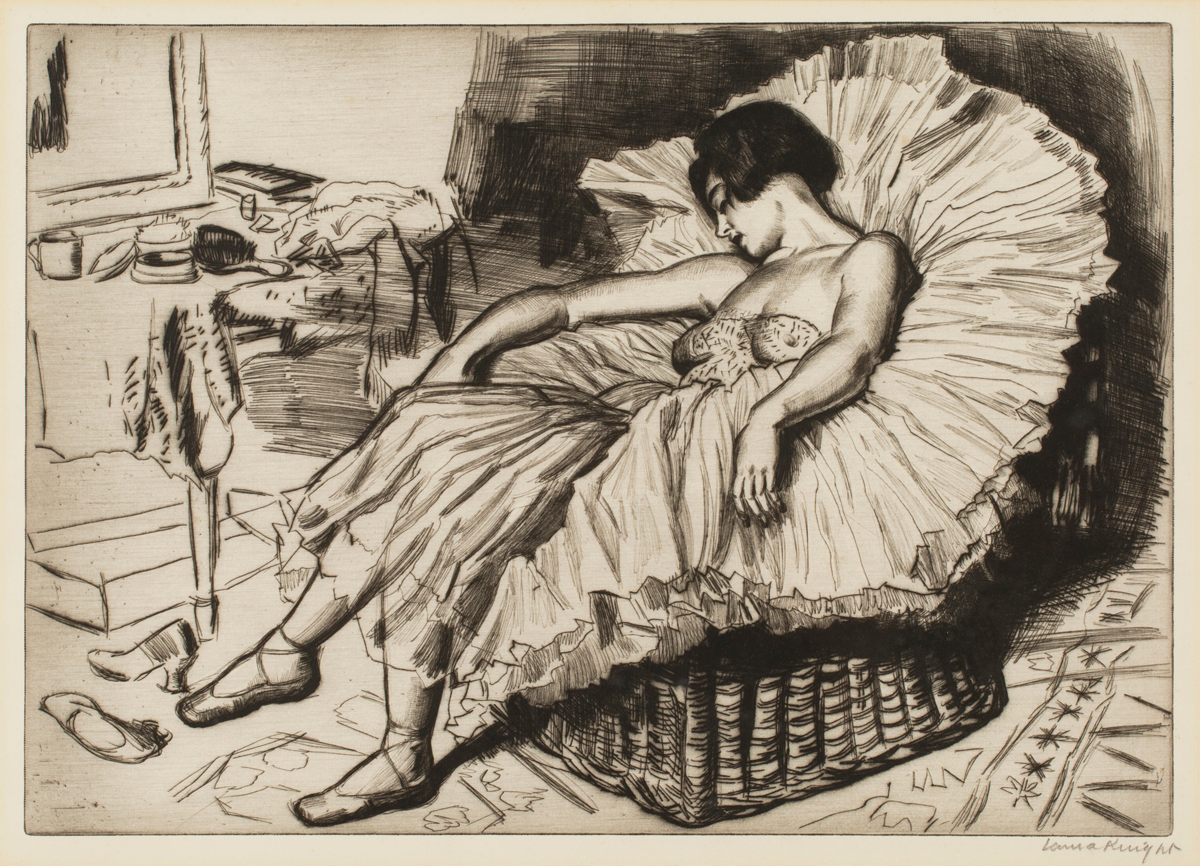
One of the exciting aspects of modern British Art from the early 20th century was the emergence of a generation of gifted female artists. Although they faced challenges their artistic voices were increasingly celebrated.
Today there is a growing interest and demand for works by prominent women artist at auction, the prints you see here sold at Toovey’s for £1100 and £4500.
Laura Knight (1877-1970) was part of the English Impressionist movement. She worked in the figurative, realist tradition and became one of the most popular modern British artists of her generation raising the status and recognition of women artists in a male dominated arena.
Laura Knight’s subjects included studies of Gypsies, Circus performers and figures from the world of theatre and ballet in London. She worked in oil and watercolour as well as producing etchings, drypoints and engravings. She was inspired not only by the glamour of the theatre but also the domestic aspects of stage life which she depicted with intimacy and sensitivity.
The drypoint etching ‘Sleeping Dancer’ captures a young woman too tired after her performance to change asleep in a wicker chair. She is framed by her full-skirted tutu which spreads out behind her framing this unguarded scene.

Sybil Andrews (1898-1992) is another highly sought after modern British female artist. She began making linocuts after attending Claude Flight’s classes at The Grosvenor School of Modern Art in 1925. She had moved to London with the artist and architect Cyril Powers in 1922.
The school promoted elements of Cubism, Futurism and English Vorticism to capture the dynamism and movement of the machine age. The Vorticists lacked the romanticism of the Post Impressionists and European Cubists. Although harsher in nature it never reached the aggressive extremes of the Italian Futurists led by Marinetti. Founded in 1914 the Vorticist movement was short lived. Its main proponent Wyndham Lewis and others were profoundly affected by their experience of the Great War. Demoralised, there was a sense that the aggressive qualities of their art had, in some way, been prophetic.
Sybil Andrews’ linocut The Giant Cable illustrates the Vorticist cubist fragmentation of reality with its hard edged imagery derived from the machine and urban environment. It is typical of the way Sybil Andrews captures scenes filled with movement, both human and mechanical. It illustrates her bold use of geometric forms and vibrant flat colours in dramatic arrangements. The figures seem to rotate, caught up in the centrifugal force of the cable drum which the artist uses to create the illusion of movement.
Art so often reflects its own times giving voice to social and economic change in society. These two beautifully conceived, powerful images highlight the importance of women artists in the 20th century and their appeal to collectors today.
I am looking forward to Toovey’s next specialist sale of prints which, Covid willing, will be held on Wednesday 17th March 2021.